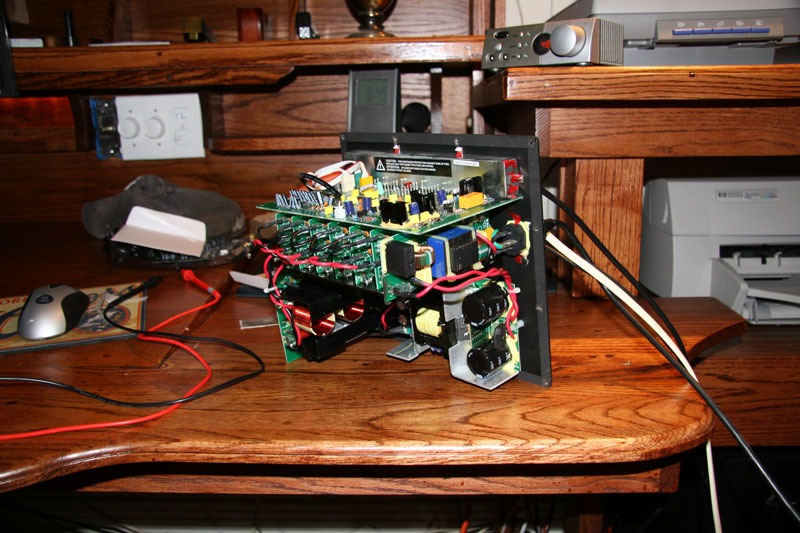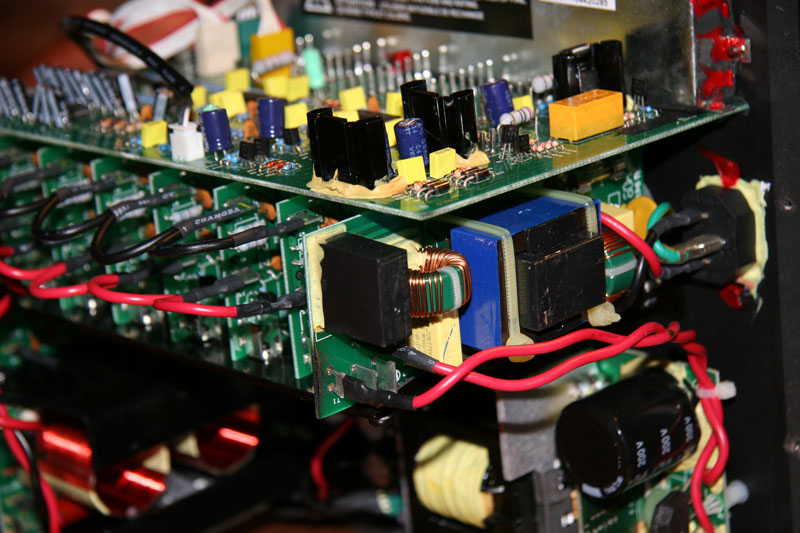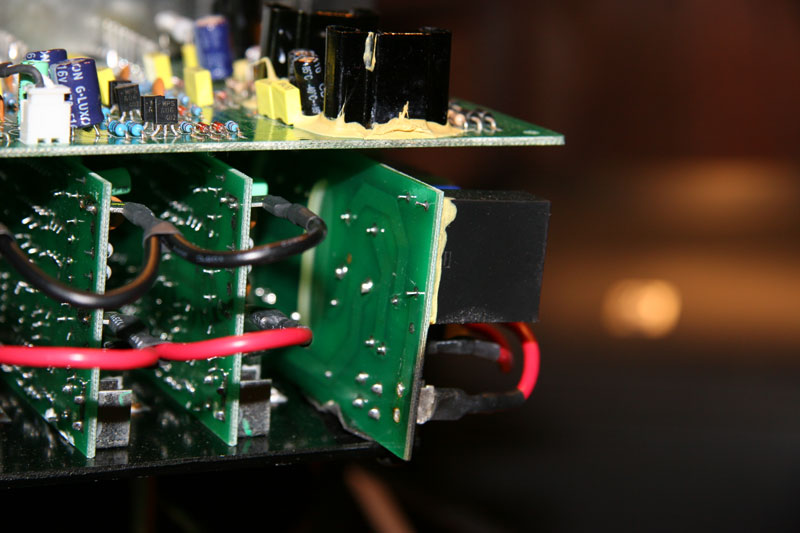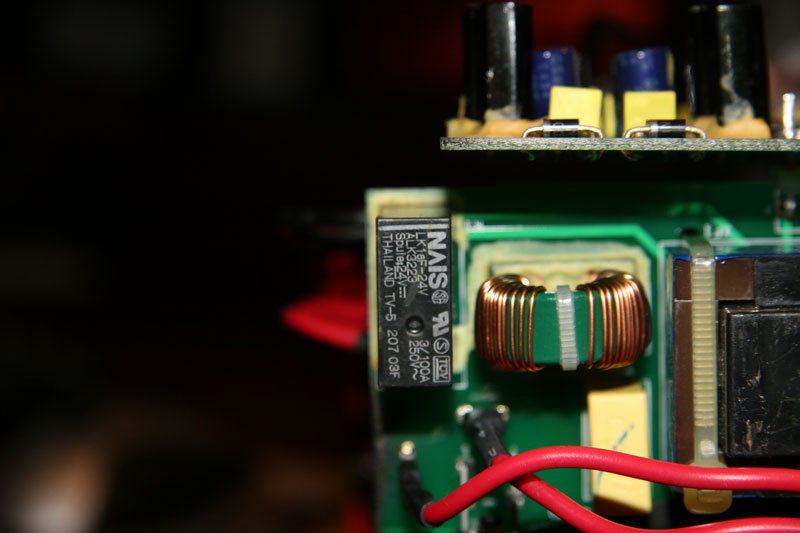Stop! Save Your 60 Bucks!!!! - Cost of sending it back to the factory for a fix.. Only for the electrically inclined and ambitious!
The engineer in me wouldn't let me be content with a broken set of $500 speakers without any real damage. So I opened it up and inspected the situation. If they're really broken... let's make sure, and make sure it's irreversible!!
Got out the trusty multimeter and started testing traces- nothing's really burnt out that's obvious. And then I saw a lead that had come loose from it's socket. This was right below the only mechanical relay in the whole assembly.
I repaired the connection.. No Dice. BUT. I started playing around with the relay- shorted out the actuating contacts on the relay, and voila! Back rockin'!
So the answer to this is the relay is shot- you turn it off, and it won't kick back in. A simple 2 dollar retail part that anyone here can replace. This makes sense- it's one of the only mechanical parts in the whole thing- electronics don't just die.
So- SURE! We'll charge 60 bucks to change out a 2 dollar relay (10 cents at cost) ..DUH!
Oh and be careful around 120V- that shit stings a little (not from this experience, just in general..) So unless you are comfortable in your electronic fixing skills- don't leave it plugged in while poking around.
(not from this experience, just in general..) So unless you are comfortable in your electronic fixing skills- don't leave it plugged in while poking around. 
Part number: get it off the pic..
Not sure if this fixes other people's problems, but it fixed mine!
PICS:

Full Resolution

Full Resolution Notice the singed PCB- I couldn't find my soldering iron, so I used my torch

Full Resolution

Full Resolution
Again, PROCEED AT YOUR OWN RISK!! I'm not claiming any responsibility explicit or implied about the safety or sucess of any operation described herein! PROCEED AT YOUR OWN RISK!!
The engineer in me wouldn't let me be content with a broken set of $500 speakers without any real damage. So I opened it up and inspected the situation. If they're really broken... let's make sure, and make sure it's irreversible!!
Got out the trusty multimeter and started testing traces- nothing's really burnt out that's obvious. And then I saw a lead that had come loose from it's socket. This was right below the only mechanical relay in the whole assembly.
I repaired the connection.. No Dice. BUT. I started playing around with the relay- shorted out the actuating contacts on the relay, and voila! Back rockin'!
So the answer to this is the relay is shot- you turn it off, and it won't kick back in. A simple 2 dollar retail part that anyone here can replace. This makes sense- it's one of the only mechanical parts in the whole thing- electronics don't just die.
So- SURE! We'll charge 60 bucks to change out a 2 dollar relay (10 cents at cost) ..DUH!
Oh and be careful around 120V- that shit stings a little
Part number: get it off the pic..
Not sure if this fixes other people's problems, but it fixed mine!
PICS:

Full Resolution

Full Resolution Notice the singed PCB- I couldn't find my soldering iron, so I used my torch

Full Resolution

Full Resolution
Again, PROCEED AT YOUR OWN RISK!! I'm not claiming any responsibility explicit or implied about the safety or sucess of any operation described herein! PROCEED AT YOUR OWN RISK!!
![[H]ard|Forum](/styles/hardforum/xenforo/logo_dark.png)
